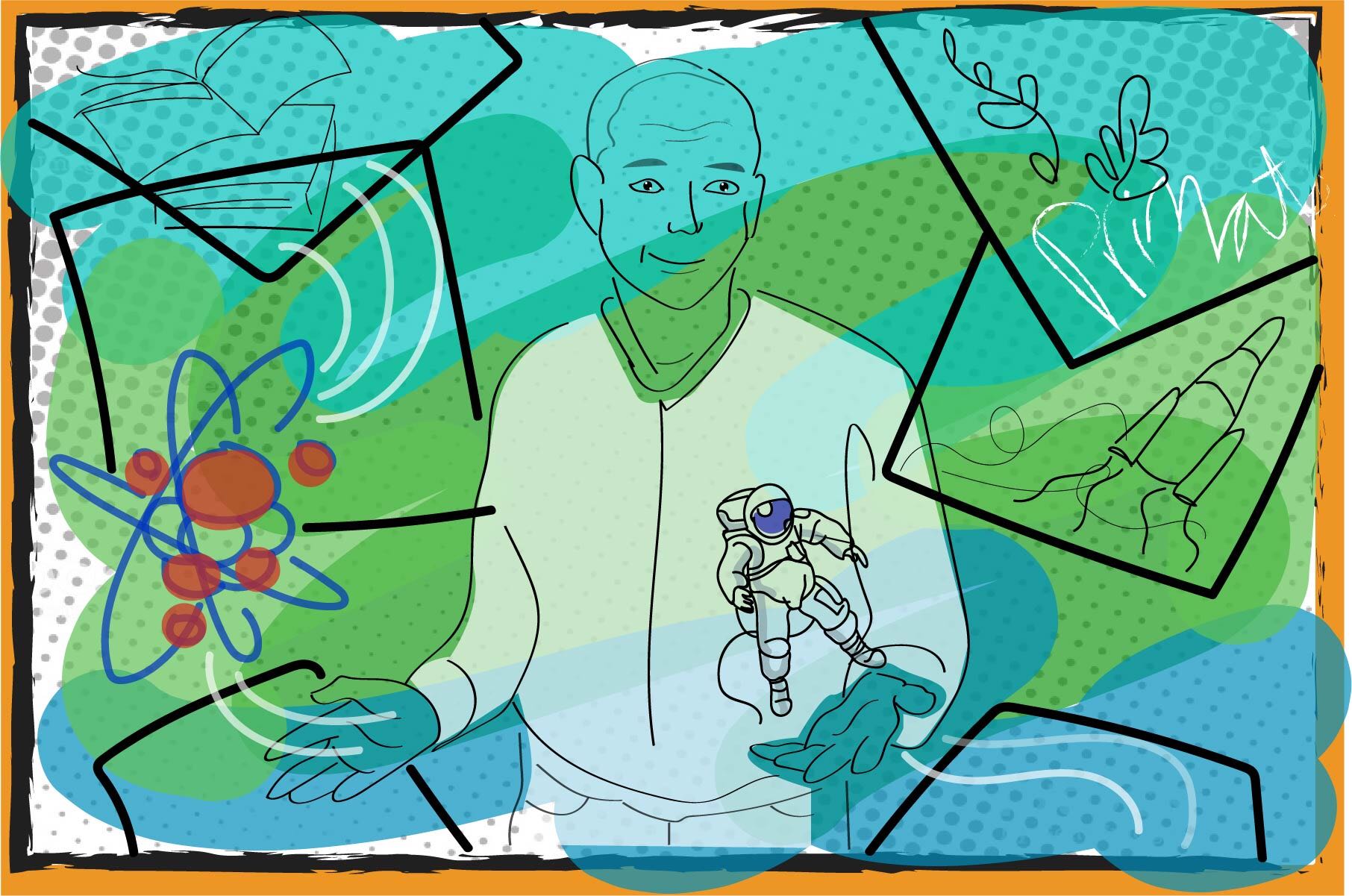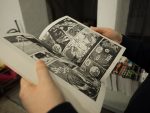It was on the “Staff Picks” shelf at my local Ann Arbor comic-book store that I first discovered Jim Ottaviani and his work. Next to weeklies and well-known superheroes, there sat the comic book “Suspended in Language,” which explores the life of scientist Niels Bohr.
I was never into comic books before, which I can assure you is no shade on the genre; I just had never found a story that I wanted to read. But here was one — a story unlike the caped crusaders and the violent hyper-colors around me. Ottaviani’s comics were perfect to capture the heart of a budding historian of science like me.
Ottaviani has made a name for himself writing comic books about scientists. His first book, “Two-Fisted Science: Stories About Scientists,” tells the tales of scientists ranging from the Renaissance all the way up to the 20th century. Since his first publication, Ottaviani has also written about other scientists, including physicists, mathematicians and primatologists.
Science is no foreign concept to Ottaviani, either. He earned a master’s degree in nuclear engineering and worked as a professional nuclear scientist before taking pen to paper. His familiarity with science means that he can tackle difficult topics with ease, while also working to explain these concepts without talking down to his audience.
It’s his unusual topic of science history coupled with this skill in presentation that sets Ottaviani’s graphic novels apart. But does this combination really work?
History of Science in Comic-Book Form
The history of science is not a new topic. It’s been an academic area of study for quite some time, while many popular novels have also dabbled in this topic. Other forms of pop-culture including television shows like “Manhattan” and movies like “The Theory of Everything” attempt to explore science history. But bringing this content to the graphic novel medium is new, and Ottaviani does a great job of adapting the material to such a format.
Graphic novels offer the benefit of illustrating every scene, providing additional visual information that can help with the presentation of complex scientific and mathematical concepts. Ottaviani teams up with illustrators like Leland Purvis, Maris Wicks and Leland Myrick to design images to help make complex material easily understandable.
Perhaps graphic novels about the history of science can also help introduce new material to different audiences. Those who read Ottaviani’s work because they enjoy comics might discover a newfound love for the history of science. Readers who are interested in history may find themselves won over by the clarity and visually of the graphic novel. Crossovers like this are always the most interesting as they signal a complex, experimental genre that branches out in all directions.
Taking Liberties for Story Structure
Presenting biographies of scientists in the form of graphic novels also poses some challenges. Readers of novels, graphic or otherwise, expect their stories to follow a standard narrative arc — a beginning, a challenge and a resolution. But lives don’t always work so neatly. Sure, each life has a beginning and an ending, but usually the narrative arc is complex, winding up and down at various points.
With this in mind, Ottaviani often takes liberty in telling the stories of these scientists. Moments of truth are combined, rearranged and wrapped in fiction in order to tell a story that makes for a compelling narrative, while also reflecting real life.
And he’ll be the first to admit this — as he says in the afterward to his book “Primates,” “…some of what you just read is fiction….The reason is, real lives don’t behave like stories, complete with tidy beginnings, middles, and ends. (Science doesn’t even have an end!)”
Ignoring the Problems
Many of the subjects of Ottaviani’s work are biographies of men that have had a troubled history — predominately with women. Feynman, for example, was a notorious misogynist, who willingly wrote about his abuses in his memoir “Surely You’re Joking, Mr. Feynman!” He worked out of strip clubs, tried pick-up-lines on women at bars and drew naked pictures of his students.
Often, however, these problems are glossed over or absent in Ottaviani’s works. Perhaps this is understandable. It’s one thing to write about events describing abuse and harassment in a biography, but another to illustrate them. Though our culture has embraced the extremes of visual violence, as seen in shows like “Game of Thrones,” such depictions are out of place in an otherwise mundane graphic novel.
Regardless, it’s an unavoidable fact that these issues aren’t addressed. Histories of scientists that downplay or ignore issues of misogyny can do real damage and perpetuate a culture that values such harmful views.
The “Great Man” Theory
Normally I would complain that writing biographies of scientists serves the “Great Man” theory of the history of science. Writing about the genius of Feynman, Bohr or Hawking suggests that science is a direct result of one individual’s intelligence, rather than a series of incremental steps, dependent on help from numerous other and often overlooked contributors.
Yet Ottaviani’s works do not pretend to be a story of the history of physics or the history of encryption. Rather, the graphical novels are strictly biographical, outlining the life of each individual. They are incomplete pictures and unfinished stories that serve to introduce these scientists, and spark interest in a whole new audience.
Despite some difficulties with approaching the history of science in comic book form, Ottaviani’s books are overall, a worthwhile read. I know that I personally was introduced to new scientists (I’m looking at you, Birute Galdikas!) through his works, and that these comic books helped to contextualize the historical information I already had.
Looking Ahead
With all this in mind, what can viewers expect from Ottaviani’s next book, set to release on July 2? The comic, titled “Hawking,” will detail the life of the late Stephen Hawking, his contributions to cosmology and theoretical physics and finally, his battle with ALS, a neurological and muscular disease.
Based on omissions in Ottaviani’s earlier work, it seems likely that Ottaviani will omit crucial parts of Hawking’s lifestyle. Like many other men labelled “genius,” Hawking was able to accomplish what he did thanks to the unpaid, unnoticed and unacknowledged work of others, notably his ex-wife Jane Hawking. Though she literally wrote the book on Stephen Hawking, it’s likely that Ottaviani will not focus on her role or Hawking’s treatment of her.
However, if there’s one thing that viewers can count on Ottaviani for, it is crafting an intricate, technical and compelling story of the life of a man. Though “Hawking” may not be a true and complete account of Steven Hawking’s life, it’s sure to be a dynamic read and a stunning presentation of the history of his science.
















